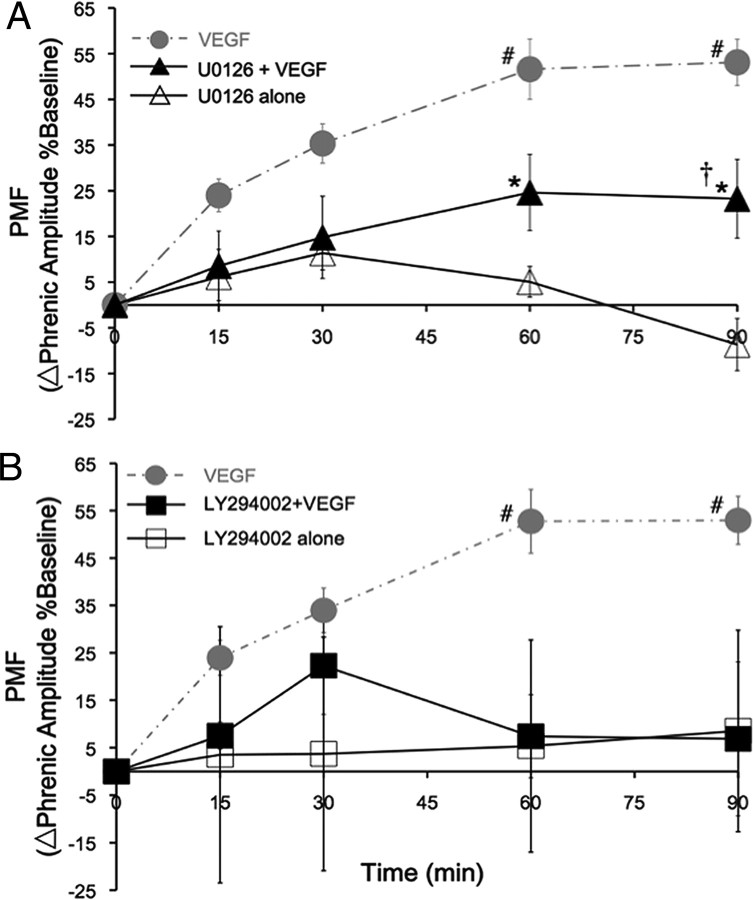Figure 5.
VEGF-induced phrenic motor facilitation requires spinal ERK and Akt activation. A, Spinal VEGF elicits pMF (gray dashed line; #p < 0.001 indicates significant difference from both U0126 plus VEGF and U0126 alone, n = 10). Pretreatment with the MEK inhibitor U0126 partially blocks VEGF-induced pMF; phrenic amplitude increases versus baseline by 60 min after injection (n = 7; *p < 0.006); however, pMF is attenuated starting 30 min after VEGF (filled triangles; n = 7). U0126 alone had no effect on phrenic motor output versus baseline or vehicle controls at the same time points (open triangles; n = 3); phrenic motor output was significantly lower than U0126 plus VEGF-treated rats (†p < 0.007) at the 90 min time point. B, Gray, dashed line shows VEGF-induced pMF. After pretreatment with the PI3K inhibitor LY294002, pMF is abolished by 60 min after VEGF injection (filled squares; n = 6). LY294002 alone has no effect on phrenic nerve activity (open squares; n = 3). #p < 0.005 indicates significant difference in VEGF-injected rats versus those pretreated with inhibitor and versus inhibitor alone (all).

